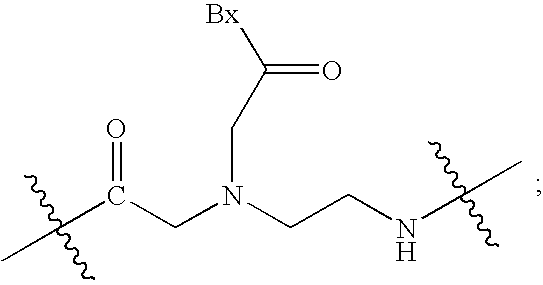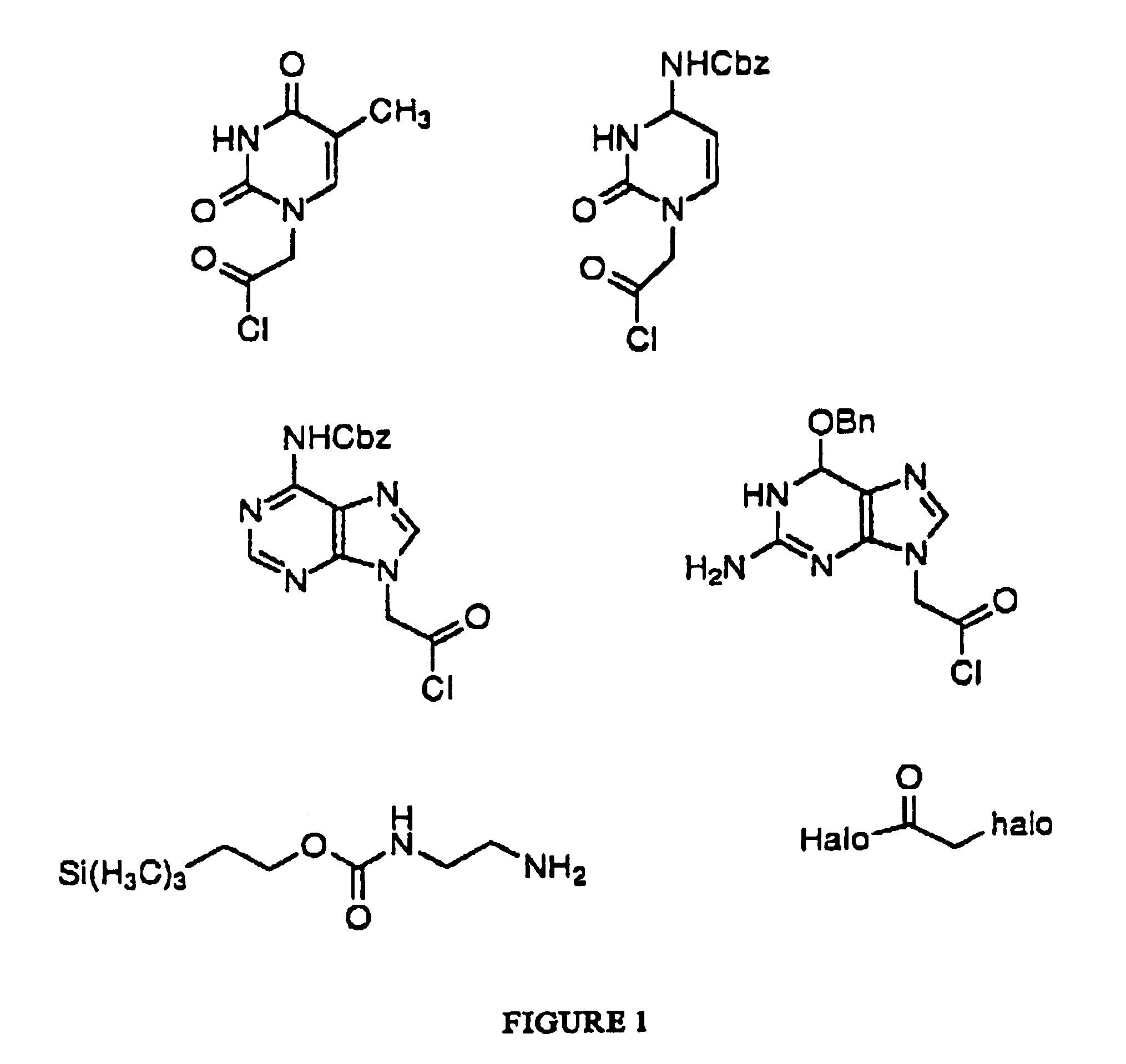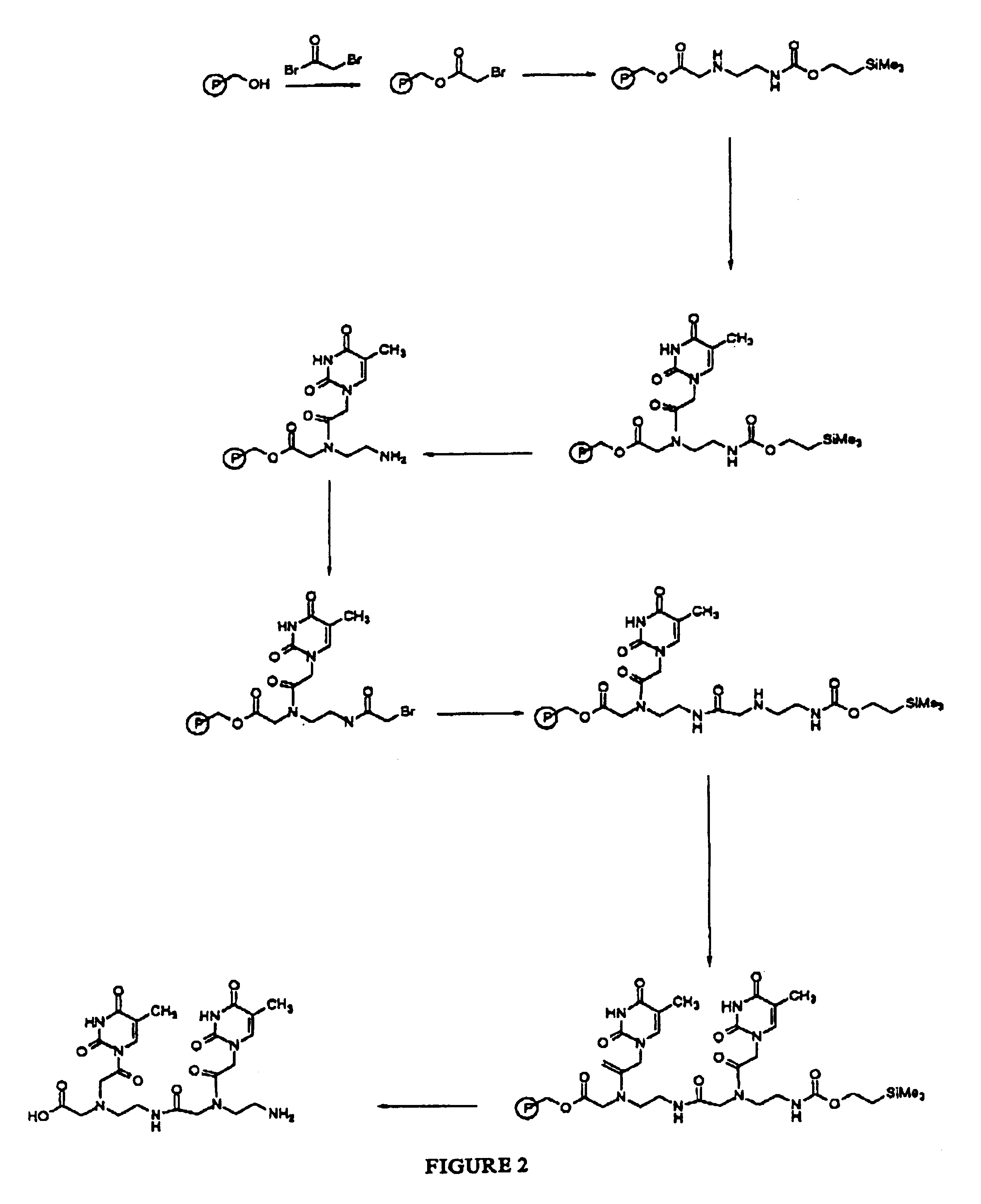Peptide nucleic acid combinatorial libraries and improved methods of synthesis
a technology of combinatorial libraries and peptide nucleic acids, applied in the field of new methods for the synthesis of peptide nucleic acid oligomeric structures, can solve the problems of unambiguous products, many different samples to be screened, and numerous purifications to be carried out in laboratory syntheses
- Summary
- Abstract
- Description
- Claims
- Application Information
AI Technical Summary
Benefits of technology
Problems solved by technology
Method used
Image
Examples
example 2
1-(Chlorocarbonylmethyl)-N.sup.4 -(benzyloxycarbonyl)cytosine
Oxalyl chloride (6.3 g, 50 mmol) is added dropwise over 5 minutes to a solution of 1-(carboxymethyl)-N.sup.4 -(benzyloxycarbonyl)cytosine (15.3 g, 50 mmol) dissolved in dichloromethane (200 mL). The reaction is stirred until gas evolution has ceased and then for an additional 2 hours. The reaction mixture is evaporated to an oil.
example 3
N.sup.6 -(Benzyloxycarbonyl)-9-(chlorocarbonylmethyl)adenine
Oxalyl chloride (6.3 g, 50 mmol) is added dropwise over 5 minutes to a solution of N.sup.6 -(benzyloxycarbonyl)-9-(carboxymethyl)adenine (16.6 g, 50 mmol) dissolved in dichloromethane (200 mL). The reaction is stirred until gas evolution has ceased and then for an additional 2 hours. The reaction mixture is evaporated to an oil.
example 4
2-Amino-N.sup.2 -(benzyloxycarbonyl)-N.sup.6 -(benzyloxy)-9-(chlorocarbonylmethyl)purine
2-Amino-N.sup.2 -(benzyloxycarbonyl)-N.sup.6 -(benzyloxy)-9-(carboxymethyl)purine (21.1 g, 50 mmol) is dissolved in dichloromethane (200 mL) and oxalyl chloride (6.3 g, 50 mmol) is added dropwise over 5 minutes. The reaction is stirred until gas evolution has ceased and then for an additional 2 hours. The reaction mixture is evaporated to an oil.
PUM
| Property | Measurement | Unit |
|---|---|---|
| structure | aaaaa | aaaaa |
| nucleic acid chimeric | aaaaa | aaaaa |
| oligomeric structures | aaaaa | aaaaa |
Abstract
Description
Claims
Application Information
 Login to View More
Login to View More - R&D
- Intellectual Property
- Life Sciences
- Materials
- Tech Scout
- Unparalleled Data Quality
- Higher Quality Content
- 60% Fewer Hallucinations
Browse by: Latest US Patents, China's latest patents, Technical Efficacy Thesaurus, Application Domain, Technology Topic, Popular Technical Reports.
© 2025 PatSnap. All rights reserved.Legal|Privacy policy|Modern Slavery Act Transparency Statement|Sitemap|About US| Contact US: help@patsnap.com



